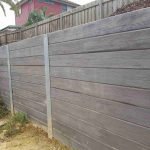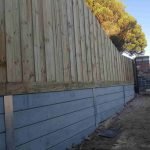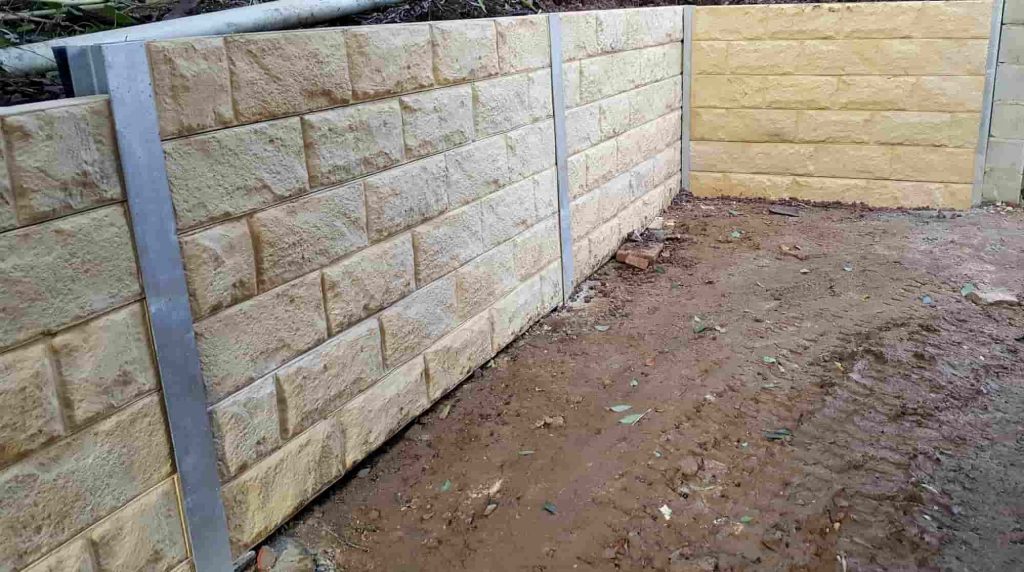Introduction
Retaining walls are necessary structures that serve both aesthetic and practical purposes in landscaping and building. These walls are designed to keep back soil, preventing disintegration and managing water overflow while likewise enhancing the visual appeal of outdoor spaces. As a specialist in this field, it is necessary to comprehend the various types of retaining walls, their materials, style factors to consider, and how they can significantly elevate your residential or commercial property's general appearance and functionality. This post digs deep into the intricacies of retaining walls, offering insights from professionals who focus on timber sleeper, concrete sleeper, H beam building and constructions, and more.
Retaining Walls: Aesthetic and Practical Solutions by Experts
The dual nature of keeping walls-- serving both useful requirements and visual desires-- makes them a staple in modern-day landscaping. When properly developed and constructed, these structures can control the land's gradient while also elevating the beauty of garden spaces. They avoid soil erosion during heavy rains or flooding while producing terraced areas for extra planting or leisure activities.
Experts highlight that a properly designed retaining wall is not merely a structure however an important part of your landscape vision. Whether you're looking to produce raised garden beds with timber sleepers or a modern appeal utilizing concrete sleepers, comprehending the different products readily available can assist your decision-making process.
Understanding Keeping Walls
What Are Keeping Walls?
Retaining walls are engineered structures that keep back soil from slopes or embankments. They are available in different styles depending on their designated purpose-- be it for residential gardens, industrial homes, or roadsides.
Why Use Keeping Walls?
- Erosion Control: They avoid soil erosion by supporting slopes. Water Management: Direct water overflow effectively. Aesthetic Appeal: Enhance landscaping with lovely designs. Functional Spaces: Develop usable locations in sloped locations.
Types of Keeping Walls
Gravity Walls
Gravity walls depend on their weight to resist lateral pressure from soil. Usually made from heavy materials like concrete or stone, they offer solidity but can be costly.
Cantilevered Walls
These walls use leverage principles for assistance. By dispersing weight downward through a base piece, cantilevered walls can be thinner than gravity walls while still being strong.
Sheet Pile Walls
Commonly utilized in tight spaces, sheet stack walls include long sheets driven into the ground. They're particularly reliable when dealing with soft soils or where groundwater is a concern.
Anchored Walls
Anchored walls utilize cable televisions anchored deep within the soil to offer extra support against lateral forces.
Materials Used in Keeping Walls
Timber Sleeper Retaining Walls
Timber sleeper keeping walls are popular due to their natural look and ease of installation. Dealt with wood products can resist rot and pests, making them durable enough for outside conditions.

Pros:
- Natural aesthetics Cost-effective Environmentally friendly
Cons:
- Requires routine maintenance Susceptible to rot if untreated
Concrete Sleeper Retaining Walls
Concrete sleepers offer durability and low upkeep compared to timber alternatives. These precast panels been available in different styles that can imitate natural stone textures.
Pros:
- Long-lasting Low maintenance Versatile designs
Cons:
- Higher preliminary costs Can be heavy; needs appropriate equipment for installation
H Beam Retaining Walls
H beam systems offer outstanding structural stability while enabling flexibility in design. They're frequently utilized in business applications where high loads are anticipated.
Pros:
- Extremely strong Less material needed compared to standard methods Suitable for high grades
Cons:
- Can be more costly than other options Requires professional setup due to complexity
Design Factors to consider for Keeping Walls
Soil Type Analysis
Understanding your website's soil type is vital before building a retaining wall. Clay soils may expand when damp while sandy soils drain pipes rapidly but can not keep back as much weight.
Slope Angle Assessment
Steeper slopes position distinct obstacles that http://danteknmj052.almoheet-travel.com/common-mistakes-to-avoid-when-employing-a-retaining-wall-installer-in-melbourne may need sophisticated engineering services such as tiered maintaining systems or higher support measures.
Drainage Solutions
Proper drainage is important for keeping any retaining wall's stability over time. Setting up weep holes or drainage pipes helps ease hydrostatic pressure behind the wall.
Construction Process of Retaining Walls
Site Preparation Steps
Clear the area of vegetation. Mark out where the wall will sit. Excavate as required based on style specifications.Foundation Installation
A solid foundation is important for stability; this often includes digging trenches filled with gravel and condensing it down before proceeding with wall construction.
Wall Construction Techniques
Depending on your choice (timber sleeper or concrete sleeper), different approaches apply:
For lumber: Positioning woods horizontally with rebar stakes. For concrete: Setting precast panels into location firmly utilizing appropriate strategies detailed by manufacturers.Maintenance Tips for Longevity
To guarantee your retaining wall stands high versus time:
Regularly check for signs of erosion at its base. Inspect for fractures or tilting every season. Maintain sufficient drainage around the structure.FAQs About Keeping Walls
1. What's the typical cost of constructing a retaining wall? Expenses differ commonly depending upon materials, size, location, and labor rates however generally range from $20 to $50 per square foot installed.

2. How long do timber sleeper keeping walls last? With appropriate treatment and upkeep, timber sleeper walls can last 15-- 30 years; nevertheless, without treatment wood may require replacement faster due to rot or pests.
3. Can I install a retaining wall myself? While DIY setup is possible for smaller projects (like simple wood sleepers), larger installations ought to involve professionals due to intricacy and prospective safety risks included with much heavier materials like concrete or H beams.
4. Do I require a permit to develop a keeping wall? License requirements depend on local guidelines regarding height limits; it's always finest practice to contact your town beforehand!
5. What type of drainage must I incorporate? Weep holes at intervals along your wall aid eliminate pressure triggered by water accumulation behind it; setting up perforated pipe drains even more improves management effectiveness over time!
6. How do I choose between timber sleeper vs concrete sleeper? Think about aspects such as budget restraints (timber tends more affordable!), wanted aesthetics (wood heat versus contemporary concrete), durability expectations (concrete usually more resilient), etc, when making this choice!
Conclusion
In summary, understanding how maintaining walls work-- and how they can serve both visual desires and practical requirements-- is essential when preparing any landscaping project including elevation changes or slope problems around residential or commercial properties huge or small! From lumber sleepers offering rustic charm all way through robust H beams guaranteeing stability under stress-- there's a choice suitable for every single context! Always seek advice from experts who specialize in these structures before starting building; their know-how will guarantee that what starts as just another yard function transforms into lasting charm showing cautious consideration towards style principles combined workmanship artistry!
So why wait? Start envisioning those versatile possibilities today due to the fact that "Retaining Walls: Visual and Functional Solutions by Experts" truly symbolizes consistency between nature architecture at its finest!
